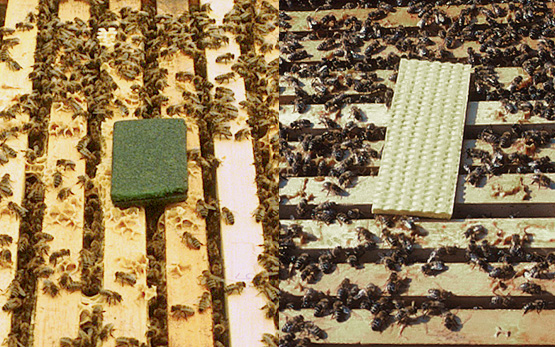Roetschi A., Baumeyer Brahier A., Berthoud-dit-Gallon Marchand H., Braillard L., Gschwend F., Guisolan A., Haldemann J., Hummerjohann J., Joller C., Loosli F., Meola M., Naskova J., Oberhänsli S., Shani N., von Ah U. and others
Antilisterial properties of selected strains from the autochthonous microbiota of a Swiss artisan soft smear cheese.
Foods, 13, (21), 2024, Article 3473.
Tintrop L., Baumeyer Brahier A., Fuchsmann P.
Identification and comparison of volatile organic compound profiles produced by different types of microalgae cultures.
In: 2nd D-A-CH Algen Summit. 7-8 May, Publ. Agroscope, Bern. 2024.
Wend K., Zorrilla L., Freimoser F., Gallet A.
Microbial pesticides – challenges and future perspectives for testing and safety assessment with respect to human health.
Environmental Health, 23, 2024, 1-29.
Von Ah U., Freimoser F.
Die Anwendungen der «schönen» Hefe Metschnikowia pulcherrima sind vielfältig.
Agrarforschung Schweiz, 15, 2024, 47-52.
Roetschi A., Gschwend F., Arias E.
Leuconostoc spp. in the rind of soft smear cheese: A contribution to food safety.
In: 14th International Symposium on Lactic Acid Bacteria. 29 August, Publ. Royal Netherlands Society for Microbiology, Egmond aan Zee (NL). 2023, 1.
Freimoser F., Perren S., Von Ah U.
Une levure qui protège les plantes.
Journal Agri, 15 décembre, 2023, 21.
Von Ah U., Arias E.
Biopreservation oder die vergessene Rolle der Fermentation.
Agrarforschung Schweiz, 14, 2023, 16-23.
Arias E.
Cheese smear or the ancestral cultivation of a beneficial biofilm.
In: IAFP’s European Symposium. 6 May, Publ. International Association for Food Protection, München. 2022, 1-12.
Muchaamba F., Von Ah U., Stephan R., Stevens M. J., Tasara T.
Deciphering the global roles of cold shock proteins in Listeria monocytogenes nutrient metabolism and stress tolerance.
Frontiers in Microbiology, 13, 2022, 1-22.
Bagnoud M., Baumeyer Brahier A., Douziech M., Riedl W., Wahl F.
Algafeed: on-farm production of protein-rich microalgae for animal feed.
In: Innofood. 20. juin, Publ. Cluster Food & Nutrition, Bulle. 2022, 1.
Ryser L., Arias E., Berthoud H., Delbès-Paus C., Chassard C., Bruggmann R., Irmler S.
Cadaverine, putrescine, and histamine formation of Morganella morganii in raclette-type cheese.
International Dairy Journal, 129, 2022, 1-8.







